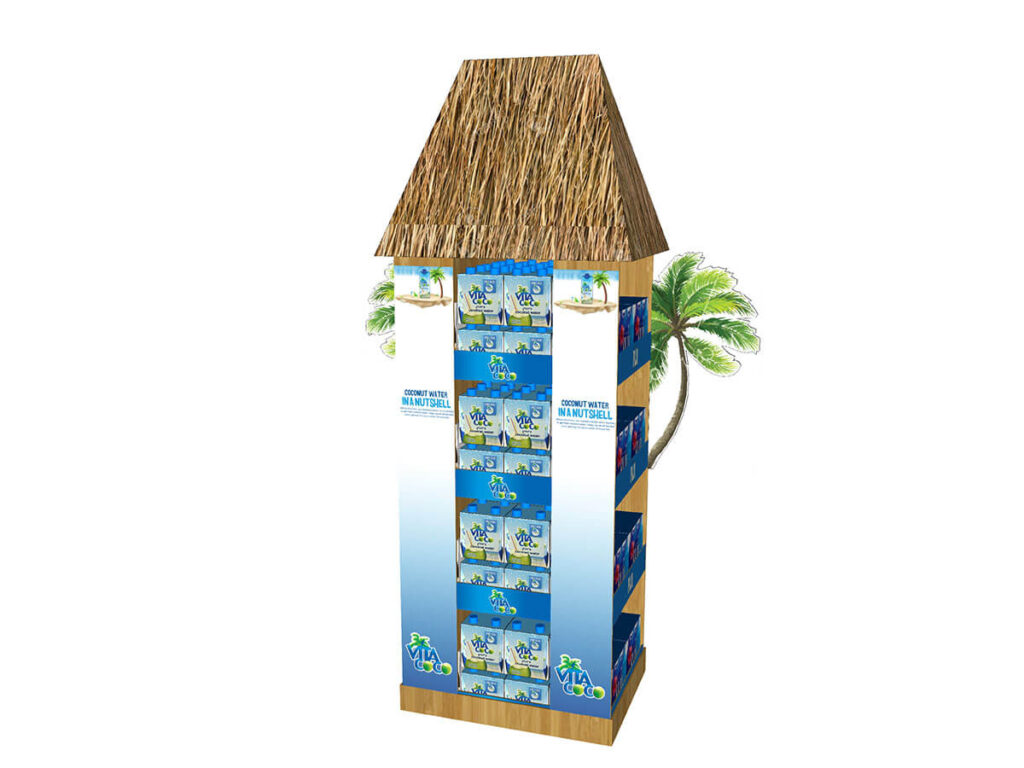Innovative Uses for Cardboard Displays Beyond Retail
Cardboard displays are often seen as essential tools for retail environments, designed to showcase products in a visually appealing way. However, the potential of cardboard goes far beyond retail. As businesses and individuals embrace sustainability and creative problem-solving, cardboard displays have found innovative applications in various other sectors. Let’s explore some surprising and inventive ways cardboard displays are being used beyond the traditional retail space.
1. Trade Shows and Exhibitions
Cardboard displays have become a go-to solution for trade shows and exhibitions, offering a lightweight, customizable, and cost-effective alternative to more expensive materials.
Brands use cardboard to create interactive booths, banners, and even freestanding structures that are not only eco-friendly but also easy to transport and set up. With digital printing, these displays can be customized with vibrant colors, logos, and graphics that align with the brand’s identity. After the event, many of these displays are recycled, making them a sustainable option for temporary promotional setups.
2. Pop-Up Events and Temporary Installations
Pop-up shops, art installations, and temporary event setups can greatly benefit from the use of cardboard displays. These events typically have short-term needs and require flexibility, which cardboard is uniquely suited to.
For example, a pop-up art gallery could use cardboard to create unique, temporary exhibition walls or display stands. These structures can be easily assembled, disassembled, and transported without the need for bulky materials, providing a quick, creative solution for short-term events.
3. Educational and Community Projects
Cardboard displays are an excellent choice for educational environments, particularly for projects or displays in schools, museums, or community centers. Their versatility and ease of use make them perfect for creating interactive learning tools, posters, or displays that can engage students in hands-on projects.
Teachers often turn to cardboard to craft educational displays or even science fair models, as it’s an affordable, accessible material. Museums can use cardboard to create temporary exhibits or interactive installations that encourage visitor participation. These creative uses not only engage the community but also promote sustainability in educational settings.
4. Home and Office Organization
Cardboard displays are also being repurposed in everyday life, offering an innovative solution for home and office organization. Creative individuals are using cardboard to build custom storage units, shelving systems, or even desk organizers.
The lightweight nature of cardboard makes it easy to assemble and move, while its ability to be cut and shaped into various forms makes it highly customizable. In offices or homes, cardboard can be a low-cost, sustainable option for keeping spaces organized without relying on plastic or other non-recyclable materials.
5. Packaging and Shipping
In addition to being used for displays, cardboard is also a crucial part of the packaging and shipping industry. However, some companies have gone beyond the typical box design and started using cardboard to create customized packaging solutions that can double as displays.
For example, a brand might create a cardboard box that transforms into a product display stand once the contents are removed. This adds an extra layer of utility and branding to the packaging, enhancing the customer experience while promoting sustainability by eliminating wasteful packaging.
6. Art and Craft Projects
Cardboard is a favorite among artists and crafters for its versatility and affordability. From sculptures to large-scale installations, artists are finding new ways to incorporate cardboard displays into their work.
Cardboard can be molded, painted, and shaped into a wide variety of artistic creations. Whether it’s a sculpture for an art gallery or cardboard furniture for a unique interior design project, the material’s flexibility opens up countless creative possibilities.
7. Sustainable Event and Party Decorations
Cardboard displays are increasingly popular for creating sustainable event and party decorations. For weddings, birthdays, and corporate events, cardboard can be transformed into decorative backdrops, table centerpieces, or even photo booths.
Since cardboard is easy to manipulate, it can be cut into any shape or size needed for the event. After the celebration, the decorations can be easily recycled, making it an eco-friendly option compared to traditional plastic or fabric decor.
8. Retail Display Reuse for Non-Retail Purposes
Retail displays that have outlived their original purpose can also be repurposed for other uses. For example, businesses might reuse cardboard display stands in their own offices or for internal events. Repurposing materials that were once used for retail marketing is a great way to give them a second life and reduce waste.
Businesses can also donate used displays to schools, community centers, or other organizations in need of affordable materials. This practice not only helps the environment but also supports community engagement.
9. Product Prototyping
Cardboard has become a popular material for product prototyping. Entrepreneurs, designers, and inventors often use cardboard to create mock-ups of new products before investing in more expensive manufacturing processes.
From furniture designs to consumer gadgets, cardboard allows creators to test out form, functionality, and structure in a low-cost, low-risk manner. Prototypes made from cardboard can be easily adjusted, modified, or discarded as needed, making it an ideal material for the early stages of product development.
Conclusion
Cardboard displays are no longer limited to retail environments. With their versatility, cost-effectiveness, and sustainability, cardboard is being used in creative ways across various industries. From trade shows and pop-up events to educational projects and art installations, cardboard’s potential is endless.
As businesses and individuals continue to embrace sustainability and innovation, the humble cardboard display is finding its place in many unexpected corners of society. Whether it’s for creating temporary installations, organizing a home, or prototyping new products, cardboard remains a material that’s not just functional but also eco-friendly.




